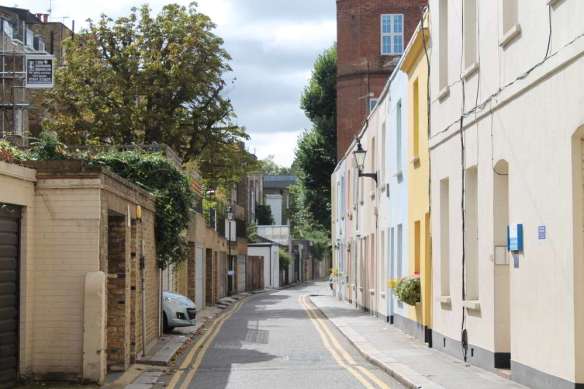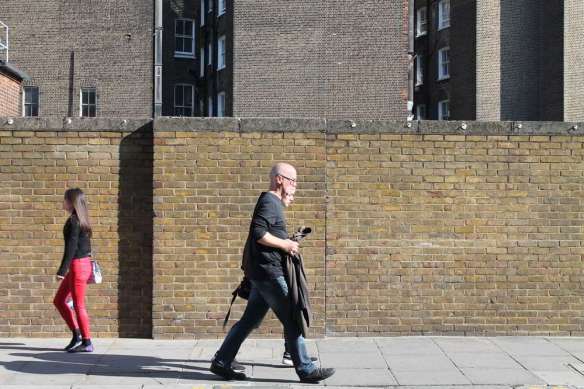
Hello readers. This is my 6th and final London post. You’re probably tired of reading about London….but you shouldn’t be! Because as the 18th century English writer, Samuel Johnson, wrote –
“When a man is tired of London, he is tired of life; for there is in London all that life can afford.”
And it’s true. Personally, I find London infinitely more stimulating, dynamic, service-oriented and rich in variety and cultural interest than Paris. But it’s huge. And expensive. So I prefer to live in cheaper smaller Paris and pop over whenever I please on the Eurostar. The journey (under the English Channel) takes just over 2 hours. When you arrive in London at the magnificent St Pancras international train station (after 6 years of renovation at a cost of £800 million), you’ll need a travel pass for getting around on the bus and tube (subway) network. Transportation is expensive. The best deal is an Oyster travel card for just a few days or for one week which gives you unlimited bus and tube travel. You pay a £5 deposit for an Oyster card and when you leave, you return the card and the £5 is refunded. Including the deposit, I paid £31.40 for 7 days’ unlimited travel in Zones 1 and 2 of Central London. The further out of Central London you wish to travel, the more you pay. 7 days’ unlimited travel in Zones 1 to 4, for example, costs £45.
I’d like to dispel a myth about food being bland or dull in England. Not true! Those days are long gone. I have eaten far better in London than I have in Paris. Throughout Britain there was a culinary revolution in the 1990s and today London boasts an unparalleled excellence in gastronomic heritage and diversity. Thanks to multiculturalism and what I call an inventive-inclusive mindset (which is only just beginning in Paris), the staggering array of food options – not only in choice of restaurant, but in mainstream supermarkets, street food and outdoor markets – is jaw-dropping. London is undoubtedly one of the most ethnically-diverse cities in the world. It’s a very exciting place to be.

I’d love to be able to peek inside these apartments above. A lane of cute mews houses in Chelsea below. (miaow)


The best way to see London is from the top of a double-decker bus. But hang on real tight to the railings as you’re climbing up the stairs (while the bus is in motion)!! I nearly tumbled down the stairs backwards when the bus lurched. Oh, and another potential danger – don’t forget to look in the opposite direction when crossing the street!



The East End. I didn’t have much time to visit London’s East End, but will do so on my next trip. I did, however, want to see a renowned public art gallery called the Whitechapel Gallery, so I jumped on the underground and got off at Aldgate East tube stop.
Founded in 1901 as one of the first publicly funded galleries for temporary exhibitions in London, it has a long track record for education and outreach projects, now focused on the Whitechapel area’s deprived populations. It exhibits the work of contemporary artists, as well as organising retrospective exhibitions and shows that are of interest to the local community. In 1938 the Whitechapel Gallery exhibited Pablo Picasso‘s Guernica to protest the Spanish Civil War.
For over a century the Whitechapel Gallery has premiered world-class artists from modern masters such as Pablo Picasso, Jackson Pollock, Mark Rothko and Frida Kahlo to contemporaries such as Sophie Calle, Lucian Freud, Gilbert and George and Mark Wallinger.


It’s a beautiful building. Admission is free and I highly recommend that you visit. Aside from the exhibitions, there’s a pleasant cake and coffee shop where you can sit and rest your weary feet (my feet really were weary after walking 6 hours a day). Leaving the building, I turned right onto Whitechapel High Street in this somewhat rough and tumble neighbourhood with the intention of finding Old Spitalfields Market. But I got lost. The East End of London is not easy to navigate, and I suggest you go in with a good map. Group walking tours are also popular. Here’s a brief history of the area –
Successive waves of foreign immigration began with Huguenot refugees creating a new suburb in Spitalfields in the 17th century. They were followed by Irish weavers, Ashkenazi Jews and, in the 20th century, Bangladeshis. Many of these immigrants worked in the clothing industry. The abundance of semi- and unskilled labour led to low wages and poor conditions throughout the East End. This brought the attentions of social reformers during the mid-18th century and led to the formation of unions and workers associations at the end of the century.

Here are some of the (renovated) Huguenot houses that I stumbled upon on Princelet Street, just off Commercial Street. If you remember, the Huguenots were Protestants and members of the Protestant Reformed Church of France during the 16th and 17th centuries when there was a mass exodus for those who fled France or stayed in the Cévennes.
The Second World War devastated much of the East End, with its docks, railways and industry leading to dispersal of the population to new suburbs and new housing being built in the 1950s. The closure of the last of the East End docks in the Port of London in 1980 created further challenges and led to attempts at regeneration and the formation of the London Docklands Development Corporation. The Canary Wharf development, improved infrastructure, and the Olympic Park mean that the East End is undergoing further change, but some parts continue to contain some of the worst poverty in Britain.

Bye for now. Below are some links to a few places of cultural interest in the East End as well as three hotels.

http://www.whitechapelgallery.org/
http://www.ravenrow.org/about/
http://www.bishopsgate.org.uk/Library
The Dennis Severs’ House is a “still-life drama” of an “historical imagination” of what life would have been like inside for a family of Huguenot silk weavers.
http://www.dennissevershouse.co.uk/
Here’s my old standby, The Penn Club, in Bloomsbury where the prices really are low considering the gorgeous neighbourhood you’re in. (The British Museum is a 10-minute walk away and it’s a 20-minute walk from St. Pancras train station.) There are no lifts (elevators), but it’s cozy in a 1950s sort of way. A full English breakfast is included in the room rate. The Penn Club has Quaker affiliations.
http://www.pennclub.co.uk/
https://thehoxton.com/london/holborn/hotels
https://www.thegoodenough.co.uk/

Well, thanks to your curiosity and rambles around London to areas that I have never visited, I will seek out these places the next time I’m there. Thanks for an informative and entertaining blog!
Thanks, Robert, for your encouraging comment!
We love travelling with you! My wife and I love London. We will visit some of these places. Thanks.